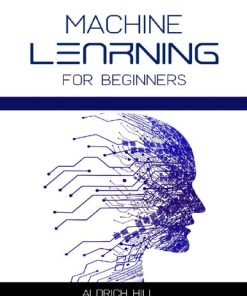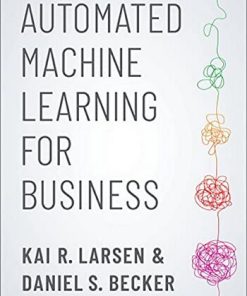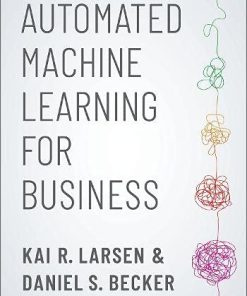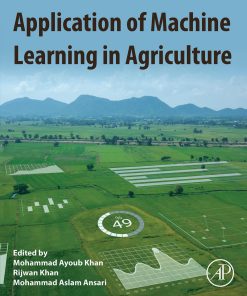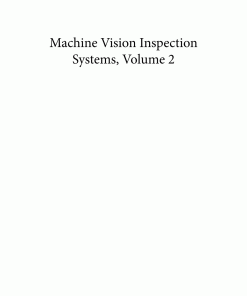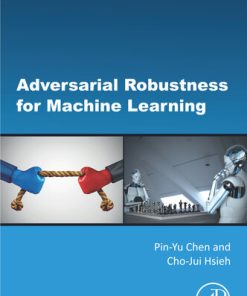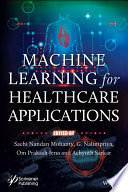(Ebook PDF) Machine Learning in Microservices Productionizing microservices architecture for machine learning solutions 1st edition by Mohamed Abouahmed, Omar Ahmed 1804612146 9781804612149 full chapters
$50.00 Original price was: $50.00.$25.00Current price is: $25.00.
Machine Learning in Microservices: Productionizing microservices architecture for machine learning solutions 1st edition by – Ebook PDF Instant Download/DeliveryISBN: 1804612146, 9781804612149
Full download Machine Learning in Microservices: Productionizing microservices architecture for machine learning solutions 1st edition after payment.
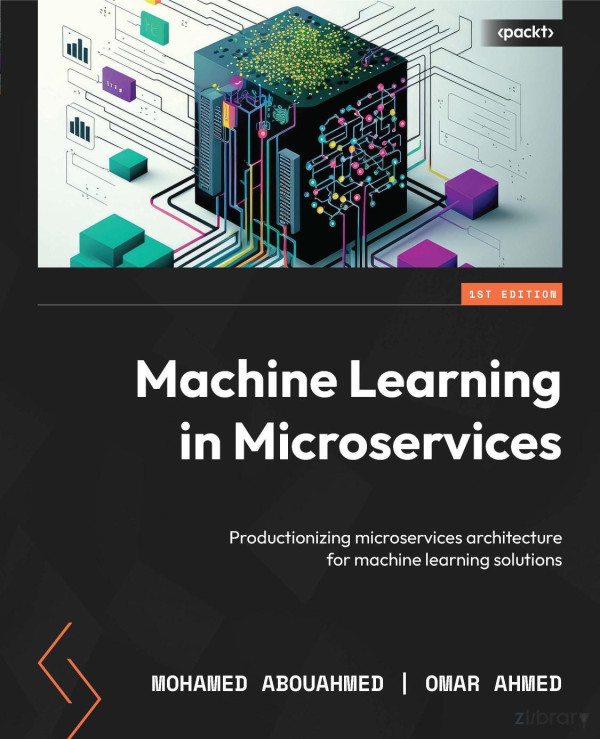
Product details:
ISBN-10 : 1804612146
ISBN-13 : 9781804612149
Author: Mohamed Abouahmed, Omar Ahmed
With the rising need for agile development and very short time-to-market system deployments, incorporating machine learning algorithms into decoupled fine-grained microservices systems provides the perfect technology mix for modern systems. Machine Learning in Microservices is your essential guide to staying ahead of the curve in this ever-evolving world of technology.
Machine Learning in Microservices: Productionizing microservices architecture for machine learning solutions 1st Table of contents:
Part 1: Overview of Microservices Design and Architecture
Chapter 1: Importance of MSA and Machine Learning in Enterprise Systems
Why microservices? Pros and cons
Advantages of microservices
Disadvantages of microservices
The benefits outweigh the detriments
Loosely versus tightly coupled monolithic systems
Service-driven, EDA, and MSA hybrid model architecture
ACID transactions
Saga patterns
Command Query Responsibility Segregation (CQRS)
DevOps in MSA
Why ML?
Summary
Chapter 2: Refactoring Your Monolith
Identifying the system’s microservices
The ABC monolith
The ABC-Monolith’s current functions
The ABC-Monolith’s database
The ABC workflow and current function calls
Function decomposition
Data decomposition
Request decomposition
Summary
Chapter 3: Solving Common MSA Enterprise System Challenges
MSA isolation using an ACL
Using an API gateway
Service catalogs and orchestrators
Microservices aggregators
Gateways versus orchestrators versus aggregators
Microservices circuit breaker
ABC-MSA enhancements
Summary
Part 2: Overview of Machine Learning Algorithms and Applications
Chapter 4: Key Machine Learning Algorithms and Concepts
The differences between artificial intelligence, machine learning, and deep learning
Common deep learning and machine learning libraries used in Python
Building regression models
Building multiclass classification
Text sentiment analysis and topic modeling
Pattern analysis and forecasting in machine learning
Enhancing models using deep learning
Summary
Chapter 5: Machine Learning System Design
Machine learning system components
Fit and transform interfaces
Transform
Fit
Train and serve interfaces
Training
Serving
Orchestration
Summary
Chapter 6: Stabilizing the Machine Learning System
Machine learning parameterization and dataset shifts
The causes of dataset shifts
Identifying dataset shifts
Handling and stabilizing dataset shifts
Summary
Chapter 7: How Machine Learning and Deep Learning Help in MSA Enterprise Systems
Machine learning MSA enterprise system use cases
Enhancing system supportability and time-to-resolution (TTR) with pattern analysis machine learning
Implementing system self-healing with deep learning
Summary
Part 3: Practical Guide to Deploying Machine Learning in MSA Systems
Chapter 8: The Role of DevOps in Building Intelligent MSA Enterprise Systems
DevOps and organizational structure alignment
DevOps
The DevOps team structure
DevOps processes in enterprise MSA system operations
The Agile methodology of development
Automation
Applying DevOps from the start to operations and maintenance
Source code version control
Configuration management and everything as a code
CI/CD
Code quality assurance
Monitoring
Disaster management
Summary
Chapter 9: Building an MSA with Docker Containers
What are containers anyway, and why use them?
Installing Docker
Docker Engine installation
Docker components
Creating ABC-MSA containers
ABC-MSA containers
Managing your system’s containers
ABC-MSA microservice inter-communication
The Docker network
TCP/IP communication between containers/microservices
Summary
Chapter 10: Building an Intelligent MSA Enterprise System
The machine learning advantage
Building your first AI microservice
The anatomy of AI enhancements
The self-healing process
Building the necessary tools
The intelligent MSA system in action
Initializing the ABC-Intelligent-MSA system
Building and using the training data
Simulating the ABC-Intelligent-MSA’s operation
Analyzing AI service operations
The PBW in action
The PAD in action
Summary
Chapter 11: Managing the New System’s Deployment – Greenfield versus Brownfield
Deployment strategies
Greenfield versus brownfield deployment
Flexibility
Scalability
Technology stack
Integration
Cost
Time-to-market
Risks
Staff onboarding
User adoption
Overcoming deployment challenges
Identify deployment risks
Prioritize risks
Developing and implementing a risk mitigation plan
The rollback plan
Test, monitor, and adjust
Post-deployment and pre-production review
Summary
Chapter 12: Deploying, Testing, and Operating an Intelligent MSA Enterprise System
Overcoming system dependencies
Reusable ABC-Monolith components and dependencies
Mitigating ABC-Intelligent-MSA deployment risks
Deploying the MSA system
The anti-corruption layer
Integrating the MSA system’s services
Testing and tuning the MSA system
The post-deployment review
Checking the new system’s performance
Identifying and fixing system defects
Compliance
System maintenance and updates
User satisfaction
People also search for Machine Learning in Microservices: Productionizing microservices architecture for machine learning solutions 1st:
is lambda good for microservices
is python good for microservices
macro services vs microservices
machine learning microservices architecture
machine learning microservices
Tags:
Machine Learning,Microservices,Productionizing,microservices,architecture,machine learning,solutions,Mohamed Abouahmed,Omar Ahmed
You may also like…
Computers - Artificial Intelligence (AI)
Computers - Artificial Intelligence (AI)
Business & Economics - Professional Finance
Uncategorized
Computers - Artificial Intelligence (AI)



